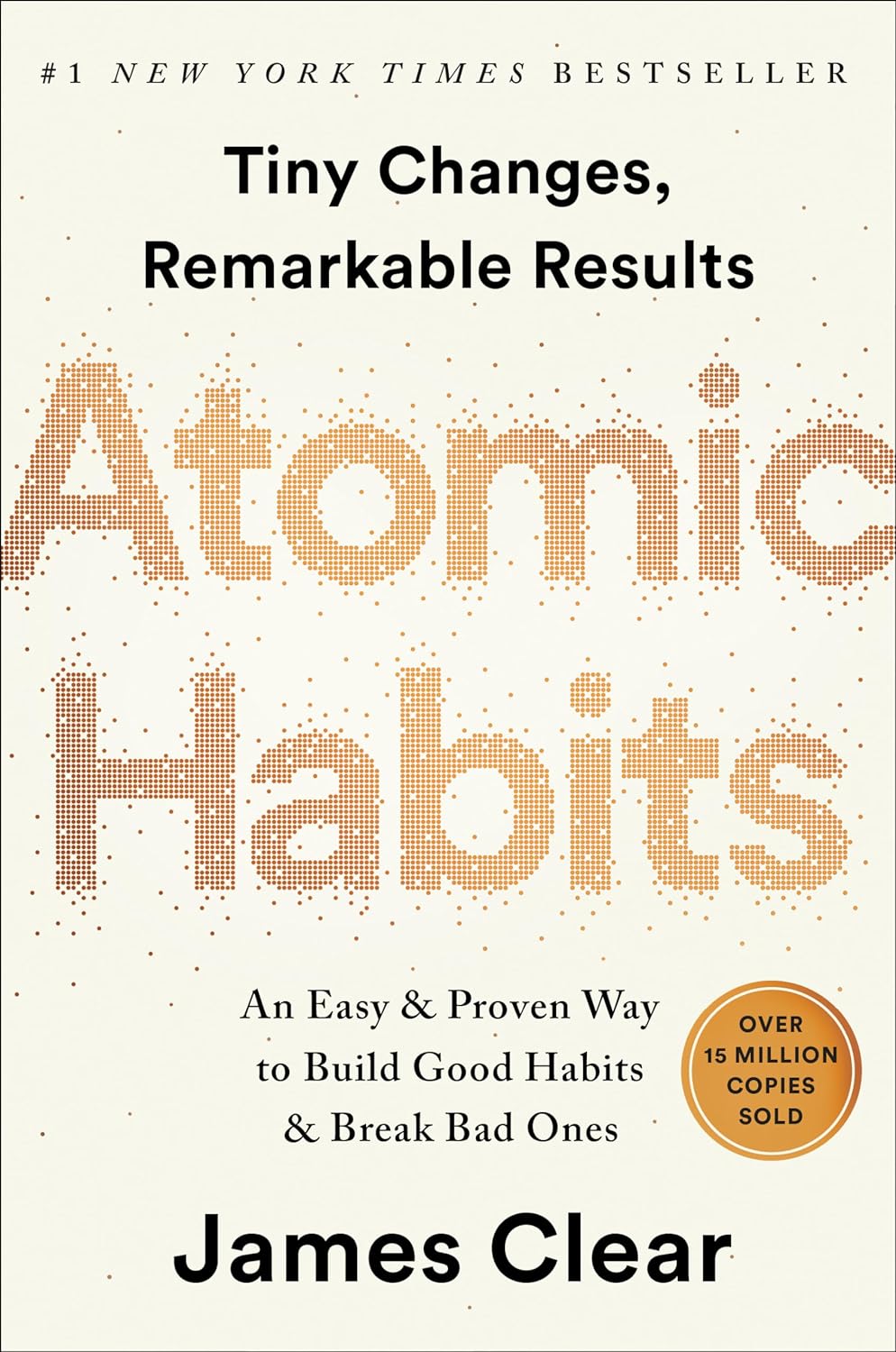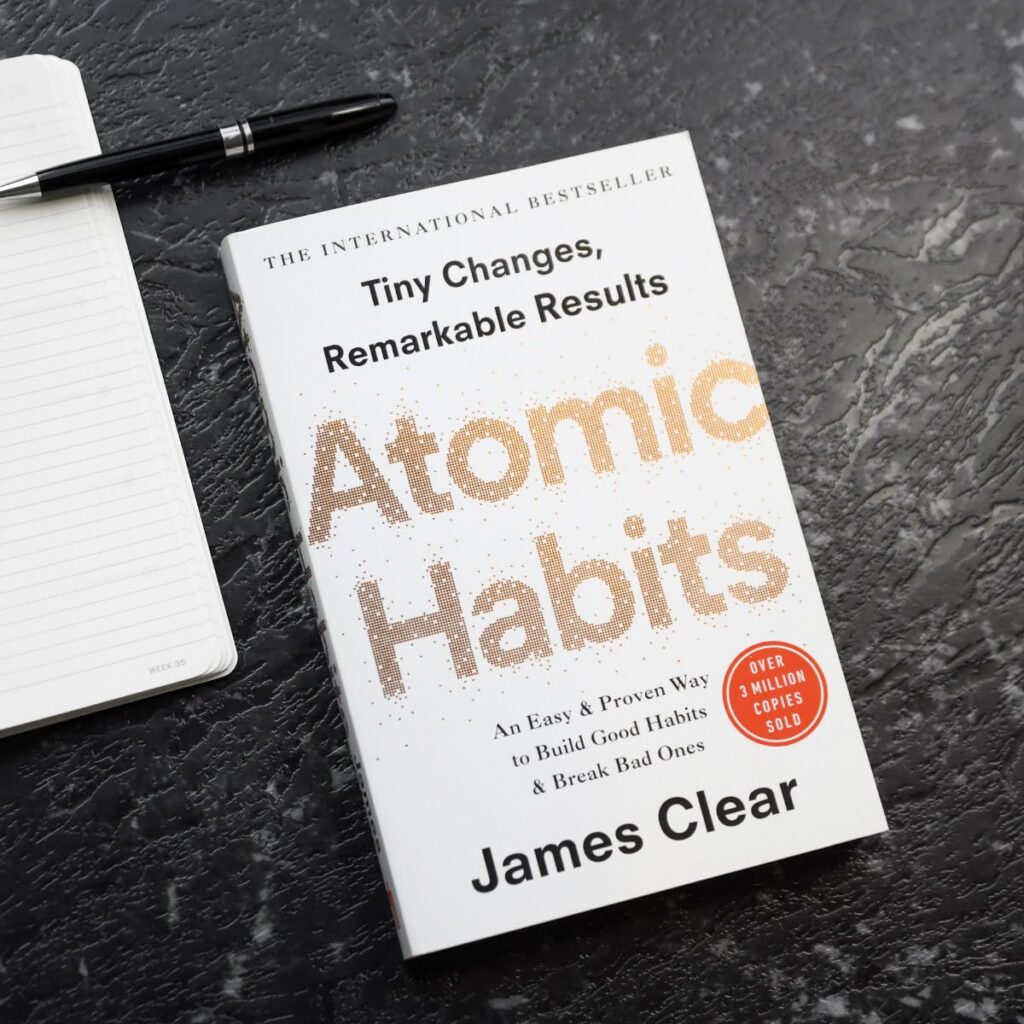
Introduction
James Clear’s Atomic Habits: An Easy & Proven Way to Build Good Habits & Break Bad Ones (2018) is one of the most influential and widely acclaimed self-help books in recent years. It offers a comprehensive framework for personal improvement by focusing on small, incremental changes—what Clear calls “atomic habits.” Rather than promoting drastic overhauls, Clear emphasizes the importance of building positive habits in a sustainable and methodical way. His approach is rooted in behavioral science, making it practical, relatable, and highly actionable.
At its core, Atomic Habits is about understanding the mechanics of habits and how we can leverage small, consistent actions to achieve significant, long-term results. Clear breaks down the science of habit formation into simple, digestible steps, offering both theoretical insights and practical tools that can be immediately applied to everyday life. The book’s key argument is that success is not a product of single, earth-shattering changes, but of the cumulative effect of tiny improvements made over time.
In this review, we will explore the main ideas in Atomic Habits, including the Four Laws of Behavior Change, Clear’s emphasis on identity-based habits, and the importance of environment in shaping our actions. We will also examine how the book compares to other works in the self-help genre, as well as its strengths and limitations.
The Core Idea of Atomic Habits
The central concept of Atomic Habits revolves around the idea of “atomic” habits—small, incremental changes that compound over time to produce remarkable results. Clear uses the analogy of an atomic particle to highlight that even something seemingly minuscule can have a profound impact when multiplied consistently. According to Clear, it’s not about setting massive goals or overhauling your entire lifestyle in a short period. Instead, he advocates for focusing on tiny 1% improvements each day, which, when compounded, lead to significant transformations over time.
Clear’s approach is particularly refreshing in a world that often promotes quick fixes and dramatic life changes as the only routes to success. Instead, he encourages readers to be patient and focus on systems rather than goals. This shift in perspective is crucial because, as Clear argues, goals are momentary and can often lead to disappointment if they are not achieved. Systems, on the other hand, are processes that help us continuously work towards our aspirations. By mastering the process—building habits—we are more likely to achieve success in a sustainable way.
The Four Laws of Behavior Change
At the heart of the book are the Four Laws of Behavior Change, which serve as Clear’s framework for habit formation. These laws are based on a simple feedback loop that all habits follow: cue, craving, response, and reward. Clear’s framework is both intuitive and backed by scientific research, making it accessible for readers to apply in their own lives.
- Make it Obvious (Cue): The first step in building good habits is to identify and clarify the cues that trigger them. Clear argues that many habits operate on autopilot because the cues are hidden or not consciously recognized. To make a habit stick, the cue needs to be obvious. This might involve setting visual reminders, tracking behavior, or restructuring your environment so that the cue for a positive habit is always in your line of sight. For instance, if you want to start exercising, you could leave your gym clothes visible, making it easier to take the first step.
- Make it Attractive (Craving): The second law addresses the craving that motivates a particular behavior. According to Clear, habits that are attractive or appealing are more likely to stick. To make a habit more enticing, Clear suggests strategies like habit-stacking (linking a new habit with an already established one) and temptation bundling (pairing a habit you want to develop with an activity you enjoy). This helps to reinforce the habit by associating it with something pleasurable.
- Make it Easy (Response): The third law revolves around reducing friction and making the desired action as easy as possible. Clear posits that people often abandon their habits because they’re too difficult or require too much effort. To combat this, he suggests breaking habits down into smaller, manageable steps. The idea is to lower the barrier to entry so that performing the habit requires minimal effort. The easier a habit is to execute, the more likely you are to stick with it over time.
- Make it Satisfying (Reward): Finally, for a habit to become ingrained, it needs to be satisfying. Clear explains that behaviors which are immediately rewarded are more likely to be repeated. Positive reinforcement is key here—whether it’s celebrating small wins or creating immediate rewards for yourself when you stick to a habit. The feeling of satisfaction acts as a positive feedback loop, making it more likely that the behavior will be repeated in the future.
Each of these laws is designed to address a specific part of the habit loop, and together they form a powerful strategy for creating positive change. Clear also provides insights on how to invert these laws to break bad habits, which is a crucial aspect of the book’s utility.
Identity-Based Habits: A New Perspective
One of the most powerful concepts introduced in Atomic Habits is the idea of identity-based habits. Clear argues that the key to lasting change lies not in what we want to achieve, but in who we want to become. Rather than setting outcome-based goals like “I want to lose 20 pounds,” Clear suggests framing goals in terms of identity, such as “I am the kind of person who exercises regularly.”
This shift from focusing on outcomes to focusing on identity is profound because it creates a sense of intrinsic motivation. When our habits are aligned with our sense of self, they become more sustainable. Identity-based habits are not about trying to achieve something external; they are about reinforcing the kind of person you believe yourself to be. Clear gives examples of how adopting this mindset can lead to lasting change, as people are more likely to stick with habits that align with their core identity.
The book encourages readers to ask themselves: “What kind of person would do this?” For example, if someone wants to write more, instead of focusing on word counts or publication goals, they should focus on being the type of person who writes daily. By shifting the emphasis from the outcome to the identity, the behavior becomes part of who you are, rather than something you are simply doing to achieve a goal.
The Role of Environment in Habit Formation
One of the most practical insights from Atomic Habits is the importance of shaping your environment to support your desired habits. Clear argues that human behavior is heavily influenced by our surroundings, often in ways we don’t consciously realize. By designing environments that make good habits easier and bad habits harder, we can significantly increase our chances of success.
For instance, if you want to eat healthier, placing nutritious snacks in visible, accessible places and keeping junk food out of sight can make a significant difference. Similarly, if you’re trying to read more, keeping a book by your bedside table or on your couch can act as a visual cue that encourages the habit. Clear emphasizes that we often overestimate our willpower and discipline, and that environment plays a much larger role in habit formation than we typically acknowledge. By optimizing our surroundings, we can reduce the need for willpower and make positive habits almost effortless.
Comparing Atomic Habits to Other Self-Help Books
Atomic Habits stands out from many other self-help books in its focus on systems rather than goals and its emphasis on small, incremental changes. In contrast, many self-help books prioritize motivational platitudes or promote massive, life-changing actions that can often feel overwhelming. Books like Charles Duhigg’s The Power of Habit (2012) and Stephen Covey’s The 7 Habits of Highly Effective People (1989) have also explored the concept of habit formation, but Clear’s approach is particularly accessible due to its clarity and actionable steps.
Unlike some books in the genre that rely heavily on abstract concepts or theories, Atomic Habits offers practical advice grounded in behavioral science. Clear’s use of real-world examples, combined with research-backed strategies, sets the book apart in terms of both usability and depth.

.
Strengths of Atomic Habits
One of the key strengths of Atomic Habits is its simplicity and practicality. Clear avoids overly complex jargon or theoretical models, instead breaking down habit formation into easily understandable steps. His writing is engaging and accessible, filled with real-life anecdotes, scientific studies, and clear instructions.
Another strength is the book’s focus on long-term, sustainable change. By emphasizing systems over goals and identity over outcomes, Clear provides a framework that is more likely to lead to lasting change, rather than short-lived bursts of motivation that fizzle out over time.
Moreover, Atomic Habits is highly actionable. Each chapter contains strategies that readers can immediately implement, from habit tracking to environment design. Clear also provides templates, cheat sheets, and additional resources to help readers apply the concepts in their daily lives.
Limitations of Atomic Habits
While Atomic Habits is filled with valuable insights, it has some limitations. For one, the concept of incremental change might not resonate with readers who are looking for faster, more dramatic results. The emphasis on small, gradual improvements may seem frustrating to those who want to see quick transformations in their lives.
Additionally, while the Four Laws of Behavior Change are effective for many habits, they may not address more complex psychological issues that underlie certain behaviors, such as addiction or deeply ingrained negative habits. For individuals dealing with deeper mental health challenges, the advice in Atomic Habits might feel too simplistic.
Conclusion
Atomic Habits by James Clear is an essential read for anyone interested in personal development and behavior change. Its practical, science-based approach makes it one of the most useful and accessible self-help books available. By focusing on small, incremental improvements and aligning habits with identity, Clear provides a sustainable framework for creating lasting change. While it may not offer quick fixes or address deeply entrenched psychological issues, Atomic Habits is an invaluable resource for those looking to build better habits, break bad ones, and achieve long-term success.
With its clear writing, actionable strategies, and emphasis on systems over goals, Atomic Habits is a standout contribution to the field of habit formation and personal growth.
Check out Atomic Habits: An Easy & Proven Way to Build Good Habits & Break Bad Ones on Amazon.
If you loked this review pleas share it with your friends and family, and why not check out some of our other Book Reviews.
.

Pingback: Book Review: The 5AM Club: Own Your Morning. Elevate Your Life by Robin Sharma - Fatty Daddy Review